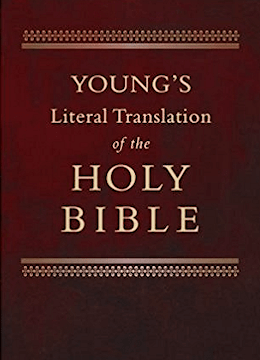Textus Receptus Bibles
Young's Literal Translation 1862
| 13:1 | In that day there is a fountain opened To the house of David And to the inhabitants of Jerusalem, For sin and for impurity. |
| 13:2 | And it hath come to pass, in that day, An affirmation of Jehovah of Hosts, I cut off the names of the idols from the land, And they are not remembered any more, And also the prophets and the spirit of uncleanness I cause to pass away from the land. |
| 13:3 | And it hath been, when one prophesieth again, That said unto him have his father and his mother, his parents, `Thou dost not live, For falsehood thou hast spoken in the name of Jehovah,' And pierced him through have his father and his mother, his parents, in his prophesying. |
| 13:4 | And it hath come to pass, in that day, Ashamed are the prophets, each of his vision, in his prophesying, And they put not on a hairy robe to deceive. |
| 13:5 | And `one' hath said, `I am not a prophet, A man, a tiller of ground I am, For ground `is' my possession from my youth.' |
| 13:6 | And `one' hath said unto him, `What `are' these wounds in thy hands?' And he hath said, `Because I was smitten `at' home by my lovers.' |
| 13:7 | Sword, awake against My shepherd, And against a hero -- My fellow, An affirmation of Jehovah of Hosts. Smite the shepherd, and scattered is the flock, And I have put back My hand on the little ones. |
| 13:8 | And it hath come to pass, In all the land, an affirmation of Jehovah, Two parts in it are cut off -- they expire, And the third is left in it. |
| 13:9 | And I have brought the third into fire, And refined them like a refining of silver, And have tried them like a trying of gold, It doth call in My name, and I answer it, I have said, `My people it `is',' And it saith, `Jehovah `is' my God!' |

Young's Literal Translation 1862
Young's Literal Translation is a translation of the Bible into English, published in 1862. The translation was made by Robert Young, compiler of Young's Analytical Concordance to the Bible and Concise Critical Comments on the New Testament. Young used the Textus Receptus and the Majority Text as the basis for his translation. He wrote in the preface to the first edition, "It has been no part of the Translator's plan to attempt to form a New Hebrew or Greek Text--he has therefore somewhat rigidly adhered to the received ones."